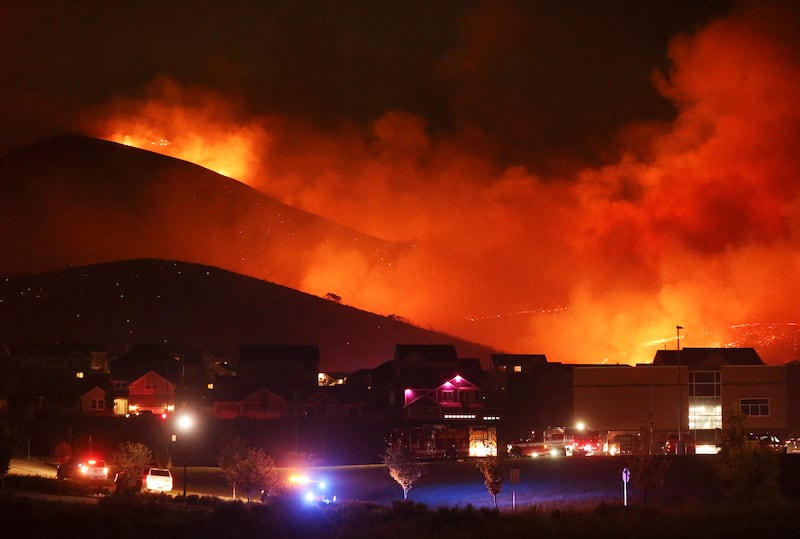Wildfires continue to wreak havoc on the western United States with more than 54,350 wildfires burning 6,802,729 acres across the region in 2021. These fires, in addition to devastating the states, make the affected areas more prone to future burning and other natural catastrophes. In Utah, one of the most wildfire-prone states, between 800 and 1,000 fires a year can cost the state more than $12 million a year, and air pollution from wildfires in California and Oregon impacts residents’ health.
Though wildfires can’t be extinguished completely, policies can be implemented that will help communities better prepare for and withstand wildfires and natural disasters. SmarterSafer — a coalition of environmental, taxpayer and insurance groups that promotes disaster resilience — recently outlined policy recommendations to help address the rising concerns related to wildfires and disaster mitigation.
Investing in pre-disaster mitigation efforts at the local, state and federal levels can reduce both the physical and fiscal costs from wildfires by not only protecting communities, but by also saving taxpayer dollars. In fact, according to a 2020 study by the National Institute of Building Sciences, $13 in damages will be saved for every $1 spend on mitigation. Additionally, there are a number of existing policy proposals that can be used to help minimize the physical and financial stress wildfires have on different communities.
The establishment of the Wildland Fire Mitigation and Management Commission based on Utah Sen. Mitt Romney’s 2021 proposal is a great step in the right direction, but more must be done.
Another proposal, by Sen. Steve Daines, a Republican from Montana, would allow governors to enter into joint agreements with land management agencies to designate areas at highest risk of wildfire as fireshed management areas. Additionally, this proposal would expedite hazardous fuel reduction projects in fireshed management areas, and prevent these high-priority projects from further delay by prohibiting court-issued injunctions.
Similarly, Daines and Rep. Dianne Feinstein, a California Democrat, have introduced a bipartisan bill to support wildland firefighters. The act would require the Office of Personnel Management to create a job series for wildland firefighters to help with recruitment efforts and boost morale.
Complementary proposals like the Disaster Mitigation and Tax Parity Act of 2021, introduced by Feinstein, provide tax incentives for some of those very investments and must be part of the equation.

Beyond environmental investments, there are also opportunities to implement innovative mitigation strategies to ensure the infrastructure and housing is constructed in ways to reduce risk. The Built to Last Act, introduced by Sen. Tammy Baldwin (D-Wisc.) and Sen. Marco Rubio (R-Fla.), aims to do just that by ensuring building codes draw upon forward-looking climate information, including data on wildfires and other environmental trends. This bipartisan proposal is a low-cost, high-reward policy that everyone should get behind.
These are just a few of the policies desperately needed to achieve a safer, more resilient society. As the West continues to deal with wildfires, it is important to race against the clock and work together on a bipartisan basis to get ahead of natural disasters.
We cannot afford to wait until after the fire strikes. Risk mitigation and investments into resiliency will help save homes, businesses, taxpayer dollars and, most importantly, lives.
David Williams is president of the nonpartisan Taxpayers Protection Alliance, based in Washington D.C. Chris Brown is executive director of SmarterSafer.

